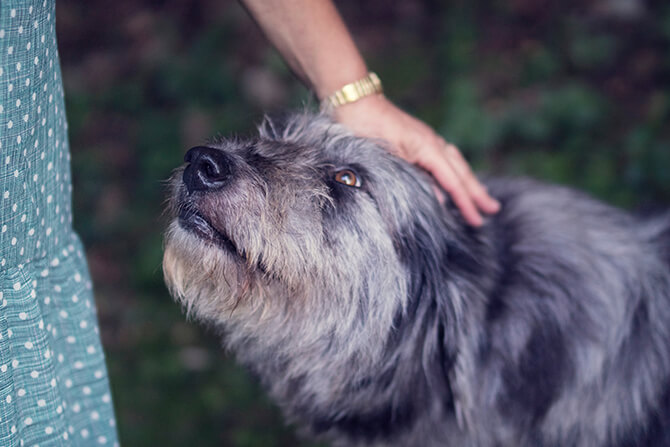
Susan recently obtained a 2-year-old mixed breed dog from a friend that is moving and cannot take the dog. It is a terrier mix, and the dog was always very friendly and well behaved when Susan observed it at the friend's house. The dog, Tippy, was used to a large family with children. Since arriving at Susan's house Tippy has begun to whine excessively all through the night, during meals and is constantly whining to go outside. Susan is unsure if she can keep the dog because of the whining, although otherwise the dog is very friendly, well behaved and housetrained.
Changes
There have been many changes in Tippy's life in the last few weeks. It is normal for a dog to have an adjustment period in their lives when moving between owners, houses and environments. Try to anticipate these changes and help the animal adjust as quickly as possible.
In this situation one of the biggest changes for the dog is going from a multi-member family to a single person home. Tippy was used to lots of constant attention and not much alone time, the opposite of the environment he is now in.
In addition Tippy may be adjusting to different feeding and exercise routines, but this adjustment should only take a few weeks at most.
Training
One of the most important elements of training a dog not to whine is to catch them being quiet. Reward, praise and spend time with the dog when it is quiet, not when it is whining. Susan can do the following:
- Have a routine that involves spending some time with the dog when she first gets home. This gives the dog attention when he is behaving properly, before he starts whining for attention and affection.
- Have the dog come and sit before she provides attention. This rewards the dog for doing a desired behavior and the dog does not need to whine to get attention. It also takes the dog's mind of the whining behavior and provides a distraction.
- Crate the dog during human meals. Feed the dog prior to eating yourself, and then crate the animal while you are eating. If the dog is quiet after the meal is finished take them outside for their run, then give them free run of the house. Once the dog understands that it is not appropriate to whine at the table, the dog can be let free.
- NEVER feed the dog at the table, and do NOT give in to whining for food. If you do not have a crate, a small spray bottle with water or a very diluted water and vinegar solution can be sprayed at the dog when it comes to the table and whines. Sometimes this just teaches the dog to move farther away in the room and whine, so this method should be used with caution.
- Anticipate when the dog needs to go outside, and allow them this time prior to them having to whine or ask to go outside. Simply let them out and then return them to the house with no additional time to play or they will learn that asking to go outside equals playtime.
- If the dog continues to whine to go outside, put them out in the fenced yard and leave them outside, by themselves, for at least 5 minutes. Then have them come into the house. If they continue, extend the time outside until they learn that they get no attention by going outside repeatedly. Avoid the temptation to let them in if they are whining, as this has just created the problem in reverse.


